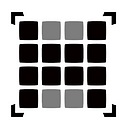The Difference between CAD and CAM
Data transfer is one of those things that is invisible when it works. When it doesn’t, it’s the elephant in the room. Things grind to a halt or worse, you end up with a program that is stillborn. In this article, we will delve into the various CAD teams and their interrelationships.
How are CAD (Computer Aided Design) and CAM (Computer Aided Manufacturing) different? These two disciplines have some overlap but more differences than similarities. CAD is nominally broken into two camps; MCAD and ECAD. The MCAD team is concerned with the big picture, the M standing for Mechanical. ECAD is what I do these days, Electronic Computer Aided Design.
These data transfer methods will vary and most are prone to losing data or misrepresenting design rules.
The overall packaging of the electronics flows from the Industrial Design (ID) where the product form factor is conceived and conveyed to the Physical Design (PD) team. These are the MCAD folks who build virtual versions of all of the custom hardware and put it all together with virtual fasteners, cabling and whatever off-the-shelf items are required. The early days of MCAD saw the use of AutoCAD which is considered to be 2.5D as it only considers the surfaces, rendering different textures onto a 3D wireframe.
True 3D MCAD solutions come from Ansys, Solidworks, Inventor, or Pro-E and others where the actual material properties are included. Solid modeling allows the MCAD applications to predict the weight, the strength, and numerous other properties of the material in its intended form.
Without ever building a thing, the Engineer can determine if a baseplate or other part should have a few more gussets or mounting holes, or whatever to survive the rigors of environmental testing. We call it “shake and bake” as the tests involve things like vibration, thermal cycling, and my favorite, the 3-foot-drop-onto-concrete test. The drop-test is the moment of truth.
Somewhere within the guts of the device, there will be a Printed Circuit Board or maybe a number of them. This is where the ECAD comes in. The big three movers are Mentor, Altium, and Cadence. We have methods that we use to transfer the mechanical data from the MCAD team to our little piece of the action. These data transfer methods will vary and most are prone to losing data or misrepresenting design rules.
For instance, a component keep-out might be used to show us where to place a connector. The computer is telling us that “no parts can go here” — except for the part that goes there. The more fastidious companies require the MCAD engineer to augment the data with an actual drawing showing all of the mechanical constraints. Creating the drawing is time consuming so many times, the Mechanical Engineer will skip it.
It took years and a few near misses…
This came back to bite me on the first motherboard I designed for Google. I placed two USB connectors on the wrong side of the board, completed everything, and taped it out. My manager was the one to notice during the design review and I had to scurry back to my desk and flip the connectors and re-route all of the high-speed and power backwards from my original but correct for the I-D requirements. There were a lot more design rule violations that way because of all of the keep-outs.
It took years and a few near misses to get the P-D team to embrace the methods we used at Qualcomm. It was a lot of work up front but we fattened the pipeline between the CAD teams. With the Qualcomm flow, the data transfer not only defined the outline but actually placed all of the components that had a designated location.
Thought I’d get that off my chest. Feels better now. I understand that this problem is being tackled by the folks both at Solidworks and at Autodesk, as they’ve added PCB layout to their arsenal. This vertical covers everything except the CAM part.
So, yeah, now we sent our compliant board over the wall to the fab shop. It may have passed all of our placement and routing checks but it’s still a long way from being a photo tool. The fab shop employs CAM engineers who are well versed on the ins and outs of PCB fabrication. They mostly use Mentor’s Valor CAM software which is very expensive and can do amazing things.
One thing we EEs do that makes their job more difficult is the sheer variety of formats in use these days. For starters, there’s good old Gerber data with several flavors, the De-Facto Valor and the new IPC 2581 standard.
We’re all over the place with mils, inches and millimeters, leading and trailing zeros, flashes, negative planes, and every other data transfer methodology. The least we can do is a decent read-me.doc.
We provide a basic stack-up diagram and the CAM operator figures out the exact layup of materials. We provide a list of controlled impedance requirements and they refactor the data to achieve the line widths and air-gaps that will hit those impedance targets — based on the chosen materials. Every geometric feature is then put through what’s called etch compensation. The artwork is still recognizable but it is 100% altered by global micro editing.
CAM people put their ass on the line for you…
The CAM team will also find double-hit drills, opens, shorts, (intentional or not) solder-mask slivers ink on the pads, missing or inaccurate dimensions and all sorts of DFM issues. They’ll dive into the notes and reference docs to make sure everything is covered. They’ll add tear-drops to our lines where they go into pads or vias. The PCB Fab-vendor’s CAM team will also be tasked with working with the Assembly house as a go-between on the assembly sub-panel.
The front-end team is also responsible for generating the reports that go back to the customer so that they are aware of the gaps in their (my) documentation. Finally, the CAM people put their ass on the line for you when they sign off on your board and it goes into the planning stage.
It’s that last thing that makes CAM so much like CAD. They go through all of these complex and competing details and deliver a photo-tool that will get the job done.
So, the next time you get an e-mail at 9:45 PM on a Friday telling you that your job is on hold because there’s no tolerance on the tooling holes and you (Ok, I) forgot to add the fiducial marks, don’t be too worked up about it. They’re not trying to ruin your weekend, they’re working hard to make you look good.

